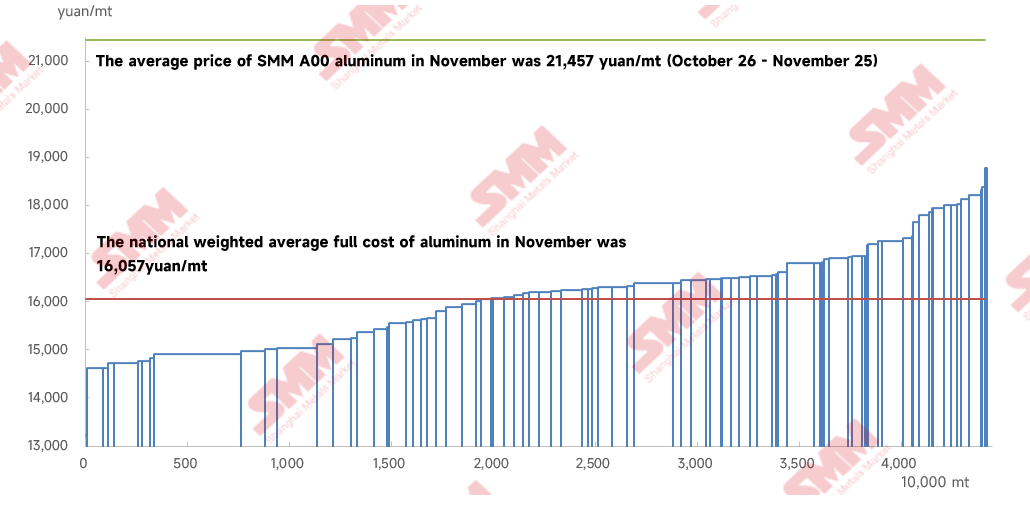Q&A: Looking at the impacts of forever chemicals in landfills, water and more – Penn State University

Report on Per- and Polyfluoroalkyl Substances (PFAS) Contamination and Research Initiatives
Introduction: The Challenge of PFAS and Sustainable Development
Per- and polyfluoroalkyl substances (PFAS), known as “forever chemicals,” represent a significant challenge to global public health and environmental stability, directly impacting the achievement of multiple Sustainable Development Goals (SDGs). These human-made compounds, valued for their resistance to heat, chemical, and biological stressors, are prevalent in products such as firefighting foams and nonstick coatings. However, their persistence in the environment leads to widespread contamination of the global water cycle, food web, and indoor air, posing a considerable threat to several SDGs.
- SDG 3 (Good Health and Well-being): The toxicity and bioaccumulation of PFAS present a prominent global public health crisis.
- SDG 6 (Clean Water and Sanitation): Widespread contamination of drinking water sources by PFAS undermines efforts to ensure access to safe water.
- SDG 12 (Responsible Consumption and Production): The lifecycle of products containing PFAS highlights critical gaps in sustainable waste management.
PFAS Contamination from Waste Management Practices
Agricultural Application of Biosolids
A common practice of applying wastewater treatment residuals (biosolids) as agricultural fertilizer has inadvertently led to significant soil contamination. This approach, while providing nutrients for crops, introduces PFAS into the terrestrial environment, impacting food safety and ecosystem health. This directly conflicts with the objectives of:
- SDG 15 (Life on Land): The contamination degrades soil quality and threatens terrestrial ecosystems.
- SDG 2 (Zero Hunger): Contamination of agricultural land raises concerns about the safety of the food supply.
Shift to Landfilling and Unforeseen Consequences
In response to growing awareness of soil contamination, an alternative disposal method involves depositing PFAS-laden biosolids in landfills. However, the environmental consequences of this practice are not well understood. The potential for PFAS to leach from landfills creates a cascading problem, threatening groundwater and surrounding ecosystems, thereby posing a risk to SDG 6 (Clean Water and Sanitation) and SDG 11 (Sustainable Cities and Communities).
Current Research Initiatives to Address PFAS Contamination
Research led by Associate Professor Onur Apul at Penn State aims to address these critical knowledge gaps through several funded projects, each aligning with key SDG targets.
EREF-Funded Project: PFAS in Landfill Environments
This initiative focuses on developing a fundamental understanding of how PFAS are released from biosolids within landfill environments. The project’s primary objectives are:
- To systematically evaluate the types of PFAS released under various landfill conditions.
- To analyze how leachate chemistry facilitates PFAS mobility.
- To provide empirical data to guide policymakers in making informed decisions about waste management, supporting SDG 12.
NSF-Funded Projects: Drinking Water and Emergency Spills
Further research addresses other vectors of PFAS contamination, with a strong focus on water security and ecosystem health.
- PFAS in Drinking Water (NSF ERASE-PFAS): This project investigates sustainable management options for PFAS-laden drinking water residuals, such as exhausted granular activated carbon filters. By exploring methods like reactivation or incineration, the research aims to develop a circular management strategy that stops the recirculation of PFAS in the environment, directly supporting SDG 6.
- Firefighting Foam Spill (NSF RAPID): In response to a major firefighting foam spill in Brunswick, Maine, this project assesses the long-term environmental impacts. Researchers are building a repository of surface water, groundwater, soil, and shellfish samples to understand the consequences for environmental quality. This work is critical for protecting aquatic and terrestrial life, aligning with SDG 14 (Life Below Water) and SDG 15 (Life on Land).
Conclusion: A Multifaceted Approach for a Sustainable Future
Addressing the PFAS crisis requires a multifaceted approach encompassing material science, environmental remediation, public policy, and education. The ongoing research provides cutting-edge solutions and contributes to the development of a trained workforce capable of tackling complex environmental pollution challenges. These consolidated efforts are essential for mitigating a global public health crisis and advancing the Sustainable Development Goals related to health, clean water, and environmental protection.
Analysis of the Article in Relation to Sustainable Development Goals
1. Which SDGs are addressed or connected to the issues highlighted in the article?
The article discusses issues related to chemical contamination of water, soil, and the food web, which directly connects to several Sustainable Development Goals (SDGs). The primary SDGs addressed are:
- SDG 3: Good Health and Well-being: The article highlights that PFAS are “toxic compounds” contributing to a “global public health crisis” due to their “negative health and environmental impacts.” This directly relates to ensuring healthy lives and promoting well-being.
- SDG 6: Clean Water and Sanitation: A significant focus of the research mentioned is on PFAS contamination in various water sources. The article explicitly refers to investigating PFAS in “drinking water,” “surface water,” “tap water,” and “groundwater,” which aligns with the goal of ensuring the availability and sustainable management of water.
- SDG 12: Responsible Consumption and Production: The core problem discussed originates from the disposal of waste products, such as “wastewater treatment residuals” (biosolids) and “PFAS-laden drinking water residuals, such as exhausted filters.” The research into managing this waste (e.g., landfilling, reactivation, incineration) is central to achieving sustainable management of chemicals and wastes.
- SDG 15: Life on Land: The article describes how applying wastewater residuals to crops “contaminates soil with ‘forever chemicals’.” The research involves “soil… sampling expertise” and collecting “soil samples” to understand and mitigate the long-term impacts of contamination on terrestrial ecosystems.
2. What specific targets under those SDGs can be identified based on the article’s content?
Based on the specific problems and research initiatives described, the following SDG targets can be identified:
-
SDG 3: Good Health and Well-being
- Target 3.9: By 2030, substantially reduce the number of deaths and illnesses from hazardous chemicals and air, water and soil pollution and contamination.
Explanation: The entire article is focused on understanding and mitigating the impact of PFAS, which are described as “toxic compounds” and “hazardous chemicals.” The research aims to provide data to guide policymakers in making decisions that will reduce human exposure to these substances through contaminated soil, water, and the food web.
- Target 3.9: By 2030, substantially reduce the number of deaths and illnesses from hazardous chemicals and air, water and soil pollution and contamination.
-
SDG 6: Clean Water and Sanitation
- Target 6.3: By 2030, improve water quality by reducing pollution, eliminating dumping and minimizing release of hazardous chemicals and materials…
Explanation: The research projects described, such as investigating PFAS release from landfills and developing methods to remove PFAS from drinking water sources, directly contribute to reducing pollution from hazardous chemicals. The investigation of the firefighting foam spill in Maine is a real-world example of addressing the release of hazardous materials into water systems.
- Target 6.3: By 2030, improve water quality by reducing pollution, eliminating dumping and minimizing release of hazardous chemicals and materials…
-
SDG 12: Responsible Consumption and Production
- Target 12.4: By 2020, achieve the environmentally sound management of chemicals and all wastes throughout their life cycle… and significantly reduce their release to air, water and soil in order to minimize their adverse impacts on human health and the environment.
Explanation: The article’s discussion of managing “PFAS-laden biosolids” and “spent activated carbons” is a direct examination of the environmentally sound management of waste. The research aims to understand the consequences of landfilling these materials to prevent a “cascading problem due to PFAS release,” which is central to this target.
- Target 12.4: By 2020, achieve the environmentally sound management of chemicals and all wastes throughout their life cycle… and significantly reduce their release to air, water and soil in order to minimize their adverse impacts on human health and the environment.
-
SDG 15: Life on Land
- Target 15.3: By 2030, combat desertification, restore degraded land and soil, including land affected by… contamination, and strive to achieve a land degradation-neutral world.
Explanation: The article identifies the practice of applying wastewater residuals as a source of soil contamination. The research involving “soil sampling” after a major spill aims to understand the extent of land degradation caused by chemical contamination, which is the first step toward restoration and preventing future damage.
- Target 15.3: By 2030, combat desertification, restore degraded land and soil, including land affected by… contamination, and strive to achieve a land degradation-neutral world.
3. Are there any indicators mentioned or implied in the article that can be used to measure progress towards the identified targets?
Yes, the article implies several specific indicators through the description of the research activities and the types of data being collected. These can be used to measure progress:
-
Indicators for Water Quality (SDG 6)
- Concentration of PFAS in various water sources: The article mentions the collection of “surface water, tap water, groundwater” samples. Measuring the levels of specific PFAS compounds in these samples serves as a direct indicator of water pollution and the effectiveness of remediation efforts.
- Chemistry of landfill leachate: The EREF-funded project will systematically evaluate “what type of leachate chemistry, will facilitate PFAS release.” This data provides an indicator for the potential of landfills to be a source of groundwater contamination.
-
Indicators for Soil and Land Quality (SDG 15)
- Concentration of PFAS in soil: The research team is equipped with “soil… sampling expertise” and collects “soil samples.” The measured concentration of PFAS in soil is a direct indicator of land contamination and degradation.
-
Indicators for Chemical Management and Health (SDG 3, SDG 12)
- Rate of PFAS release from waste materials: The project aims to create a “fundamental understanding of PFAS release from PFAS-laden biosolids in landfill environments.” Quantifying this release rate is an indicator of how effectively waste is being managed to prevent environmental contamination.
- Concentration of PFAS in biota: The collection of “shellfish” samples implies using the concentration of PFAS in living organisms as an indicator. This measures the extent to which these “forever chemicals” have entered the food web, which is a critical measure of their impact on both ecosystem and human health.
4. Table of SDGs, Targets, and Indicators
| SDGs | Targets | Indicators |
|---|---|---|
| SDG 3: Good Health and Well-being | 3.9: Substantially reduce deaths and illnesses from hazardous chemicals and water/soil pollution. |
|
| SDG 6: Clean Water and Sanitation | 6.3: Improve water quality by reducing pollution and minimizing the release of hazardous chemicals. |
|
| SDG 12: Responsible Consumption and Production | 12.4: Achieve environmentally sound management of chemicals and all wastes to minimize their release. |
|
| SDG 15: Life on Land | 15.3: Restore degraded land and soil, including land affected by contamination. |
|
Source: psu.edu

What is Your Reaction?
 Like
0
Like
0
 Dislike
0
Dislike
0
 Love
0
Love
0
 Funny
0
Funny
0
 Angry
0
Angry
0
 Sad
0
Sad
0
 Wow
0
Wow
0



















































.jpg.webp?itok=0ZsAnae9#)
























